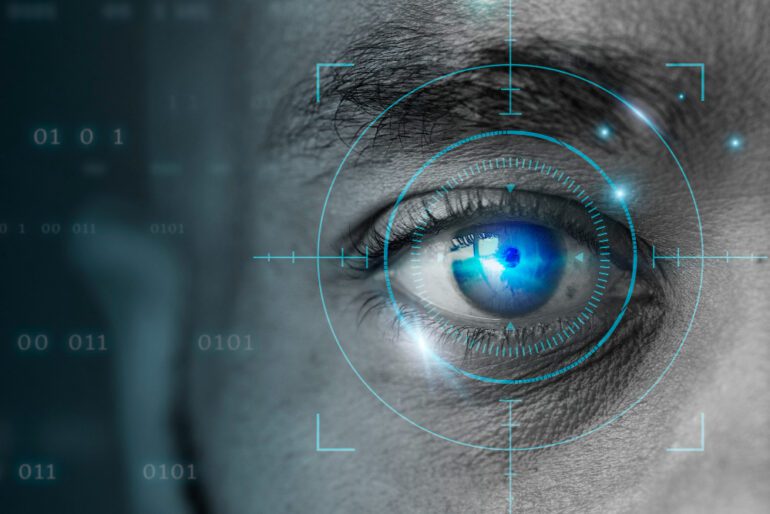TL;DR:
- A groundbreaking study introduces AI-driven retinal imaging for ASD diagnosis.
- Traditional ASD diagnosis relies on specialized professionals, causing delays and accessibility issues.
- AI analysis of retinal images offers a more objective and accessible screening method.
- High accuracy in discerning ASD presence and symptom severity with AI models.
- The optic disc area in the retina plays a significant role in ASD detection.
- Implications include early interventions and improved long-term outcomes for ASD individuals.
- This AI approach could extend to other healthcare domains.
- Market impact: Potential for AI-driven diagnostics to transform healthcare with objectivity and accessibility.
Main AI News:
In the realm of healthcare, specifically in the diagnosis of Autism Spectrum Disorder (ASD), a groundbreaking study has surfaced. Traditionally, diagnosing ASD has relied heavily on specialized professionals, a process often laborious and not universally accessible. This delay in diagnosis and intervention has profound implications for individuals with ASD in the long run. In an age where early detection is paramount, the demand for more accessible and objective diagnostic methods has never been greater.
Enter a groundbreaking approach that has the potential to redefine the landscape of ASD screening: the utilization of retinal photographs analyzed through advanced deep-learning algorithms. This method represents a significant departure from conventional diagnostic practices, harnessing the power of artificial intelligence to potentially streamline and democratize the ASD identification process. By merging ophthalmological insights with cutting-edge AI technology, researchers have opened up a new avenue that promises to make ASD screening more efficient and widely available.
The Convergence of Deep Learning and Ophthalmology: A New Dawn for ASD Screening
The intersection of deep learning and ophthalmology presents a promising new avenue for ASD screening. While the use of retinal photographs as a diagnostic tool is not entirely new in medicine, its application in identifying ASD is a novel approach. The deep-learning algorithms employed in this study are specifically designed to recognize intricate patterns in retinal images that may indicate ASD. These AI-driven models meticulously analyze the details of the retina, potentially holding the key to ASD biomarkers.
This methodology stands out for its potential to provide a more objective and readily accessible form of ASD screening. Traditional diagnostic methods, while comprehensive, often involve subjective assessments and require significant resources. In contrast, retinal imaging combined with AI analysis offers a faster and more standardized approach to identifying ASD markers. This approach could prove particularly valuable in regions with limited access to specialized ASD diagnostic services, helping to bridge healthcare disparities.
The Fusion of Ophthalmological Data and AI: A Milestone in Medical Diagnostics
The study’s integration of ophthalmological data with AI signifies a significant leap in medical diagnostics. It not only enhances the potential for early ASD detection but also opens the door for similar AI applications in other healthcare domains, where pattern recognition in medical imaging can play a vital diagnostic role.
Accuracy and Implications: Unveiling the Power of AI
The study’s findings are especially noteworthy due to the accuracy and reliability of the AI models used. An average area under the receiver operating characteristic curve (AUROC) of 1.00 indicates nearly flawless discernment between individuals with ASD and those with typical development. Such precision underscores the potential of these deep-learning algorithms as reliable ASD screening tools.
Moreover, the study unveiled a 0.74 AUROC in assessing the severity of ASD symptoms. This suggests that AI models can not only identify the presence of ASD but also offer insights into the spectrum of symptom severity. This aspect of the research is pivotal for customizing intervention strategies to individual needs.
A pivotal discovery from the study was the significant role of the optic disc area in the retina. The models maintained a high AUROC even when analyzing a small portion of the retinal image, emphasizing the importance of this specific area in ASD detection. This finding could shape future research, focusing on particular retinal regions for more efficient screening processes.
Transforming ASD Diagnostics: AI-Driven Objectivity and Accessibility
The study’s outcomes carry profound implications for the field of ASD diagnostics. The use of AI-driven analysis of retinal photographs not only offers a more accessible screening method but also introduces a layer of objectivity that is sometimes challenging to attain in traditional diagnostic processes. As this research progresses, it could pave the way for more widespread and early identification of ASD, leading to timely interventions and improved long-term outcomes for individuals with ASD.
Future Prospects: AI-Enhanced ASD Diagnostics Leading the Way
The study’s success in using deep learning algorithms for ASD screening through retinal images signifies a pivotal advancement with far-reaching implications for future diagnostics. This approach heralds a new era in healthcare, where AI’s potential to enhance early and accessible diagnoses could revolutionize the management of complex conditions like ASD.
The transition from research to clinical application necessitates the validation of the AI model across diverse populations to ensure effectiveness and impartiality. This step is critical for integrating such technology into mainstream healthcare while addressing the ethical and data privacy considerations inherent in AI in medicine.
Looking ahead, this research opens the door to AI’s broader role in healthcare. It promises a shift towards more objective and timely diagnoses, potentially extending to other medical conditions beyond ASD. Embracing AI in diagnostics could lead to early interventions, improving long-term outcomes for patients and enhancing the overall efficiency of healthcare systems.
Conclusion:
The integration of AI and retinal imaging for ASD diagnosis represents a transformative shift in healthcare. It addresses the challenges of delays and accessibility in traditional methods, offering a more objective and accessible screening solution. With high accuracy and potential applications beyond ASD, this technology has the potential to reshape the healthcare market by enhancing objectivity and accessibility in diagnostics.

